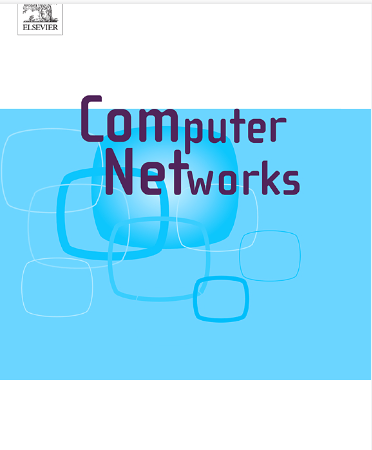GEN-DRIFT: Generative AI-driven drift handling for beyond 5G networks
IF 4.4
2区 计算机科学
Q1 COMPUTER SCIENCE, HARDWARE & ARCHITECTURE
引用次数: 0
Abstract
Beyond fifth-generation (B5G) networks enable high data rates, low latency, and massive machine communications, driving digital transformation across sectors. The integration of Artificial Intelligence and Machine Learning (AI/ML) technologies plays a vital role in enhancing the performance and efficiency of B5G networks. However, the dynamic and ever-evolving service demands associated with B5G use cases lead to the occurrence of drift, which can significantly degrade the performance of AI/ML models. Drift occurrence often results in violations of Service Level Agreements (SLAs) and over- or under-provisioning of resources, ultimately impacting user experience and network reliability.
Drift detection and adaptation are essential for addressing the dynamic service demands of B5G networks. Existing threshold approach and various other frameworks, have significant limitations, — SLA violations from delayed drift detection and inefficient resource management due to frequent retraining. This paper proposes a drift handling framework that determines drift promptly after its occurrence using Generative Artificial Intelligence (Gen-AI). The proposed Gen-AI framework is evaluated for a Quality of Service Prediction use case on the Open Radio Access Network (O-RAN) Software Community (OSC) platform and compared to the existing threshold and other frameworks. Also, a real-time dataset from the Colosseum testbed is considered to evaluate the Network Slicing (NS) use case with the proposed Gen-AI framework for drift handling.
The results demonstrate that the proposed Gen-AI framework leverages both Generative Adversarial Network (GAN) and Variational AutoEncoder (VAE), significantly enhances drift detection and adaptation time in B5G networks. Specifically, in the QoS prediction use case, GAN achieves 98% drift detection accuracy, while the VAE achieves 95% , compared to 85% for the classifier framework, 25% for the threshold-based approach. In addition, a similar kind of results is observed in case of the network slicing use case. These results highlight the effectiveness of the proposed Gen-AI framework in proactively handling drift with reduced detection and adaptation time, making it a promising solution for B5G networks.
GEN-DRIFT:超越5G网络的生成式ai驱动漂移处理
超五代(B5G)网络实现了高数据速率、低延迟和大规模机器通信,推动了各行业的数字化转型。人工智能和机器学习(AI/ML)技术的融合对提高B5G网络的性能和效率起着至关重要的作用。然而,与B5G用例相关的动态和不断发展的服务需求导致漂移的发生,这可能会显著降低AI/ML模型的性能。漂移的发生通常会导致违反服务水平协议(sla)和资源供应过剩或不足,最终影响用户体验和网络可靠性。漂移检测和自适应是解决B5G网络动态业务需求的关键。现有的阈值方法和各种其他框架都有明显的局限性,-由于延迟漂移检测而违反SLA,并且由于频繁的再培训而导致资源管理效率低下。本文提出了一种利用生成式人工智能(Gen-AI)在漂移发生后迅速确定漂移的漂移处理框架。针对开放无线接入网(O-RAN)软件社区(OSC)平台上的服务质量预测用例,对提议的Gen-AI框架进行了评估,并与现有阈值和其他框架进行了比较。此外,还考虑了来自Colosseum试验台的实时数据集,以评估网络切片(NS)用例,并提出了用于漂移处理的Gen-AI框架。结果表明,提出的Gen-AI框架利用了生成对抗网络(GAN)和变分自动编码器(VAE),显著提高了B5G网络中的漂移检测和自适应时间。具体来说,在QoS预测用例中,GAN达到98%的漂移检测精度,而VAE达到95%,而分类器框架为85%,基于阈值的方法为25%。此外,在网络切片用例中也观察到类似的结果。这些结果突出了所提出的Gen-AI框架在减少检测和适应时间的情况下主动处理漂移方面的有效性,使其成为B5G网络的一个有前途的解决方案。
本文章由计算机程序翻译,如有差异,请以英文原文为准。
求助全文
约1分钟内获得全文
求助全文
来源期刊

Computer Networks
工程技术-电信学
CiteScore
10.80
自引率
3.60%
发文量
434
审稿时长
8.6 months
期刊介绍:
Computer Networks is an international, archival journal providing a publication vehicle for complete coverage of all topics of interest to those involved in the computer communications networking area. The audience includes researchers, managers and operators of networks as well as designers and implementors. The Editorial Board will consider any material for publication that is of interest to those groups.
 求助内容:
求助内容: 应助结果提醒方式:
应助结果提醒方式:


